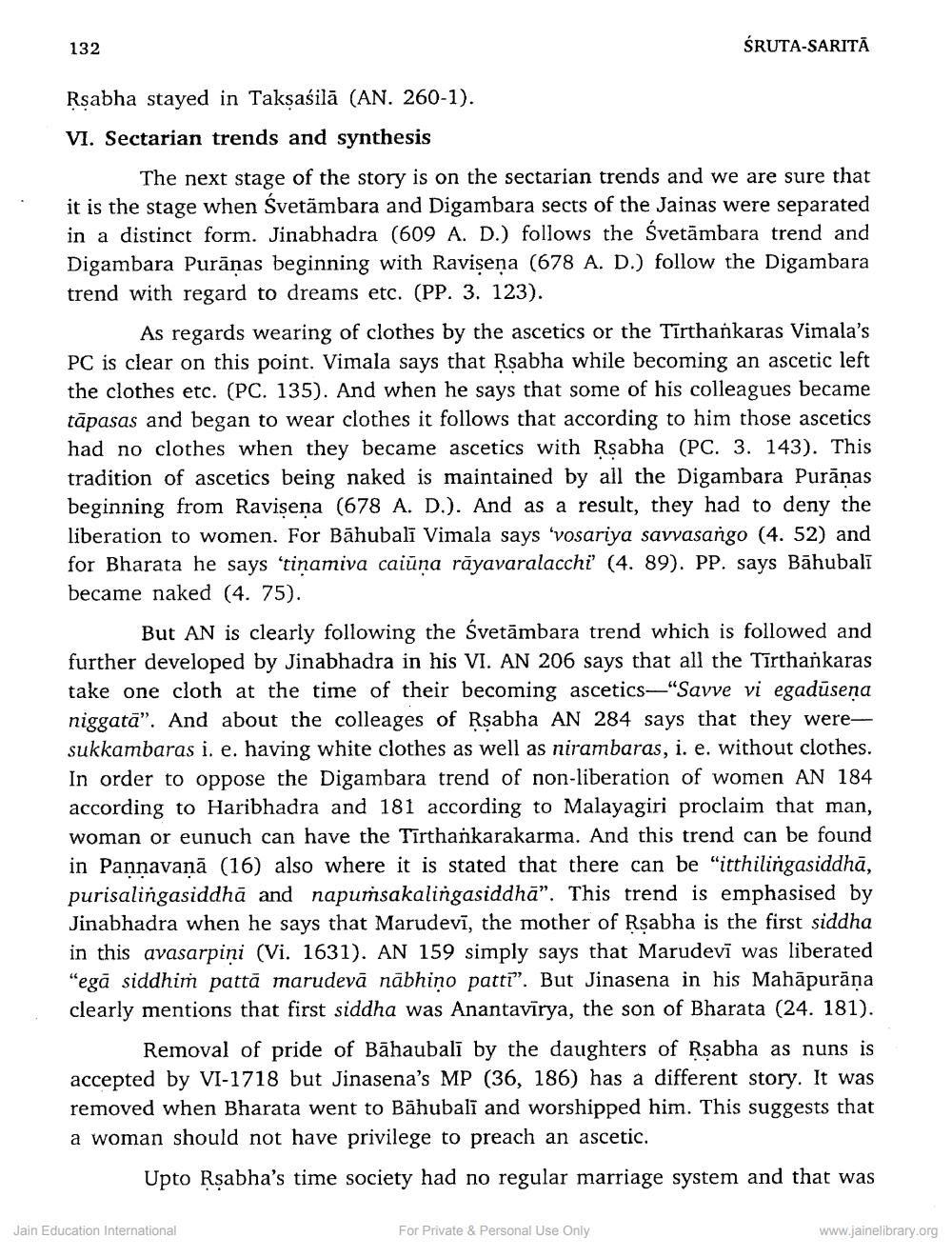________________
132
ŚRUTA-SARITĀ
Rşabha stayed in Takşaśilā (AN. 260-1). VI. Sectarian trends and synthesis
The next stage of the story is on the sectarian trends and we are sure that it is the stage when Svetämbara and Digambara sects of the Jainas were separated in a distinct form. Jinabhadra (609 A. D.) follows the svetāmbara trend and Digambara Purānas beginning with Ravisena (678 A. D.) follow the Digambara trend with regard to dreams etc. (PP. 3. 123).
As regards wearing of clothes by the ascetics or the Tirthańkaras Vimala's PC is clear on this point. Vimala says that Rsabha while becoming an ascetic left the clothes etc. (PC. 135). And when he says that some of his colleagues became tāpasas and began to wear clothes it follows that according to him those ascetics had no clothes when they became ascetics with Rsabha (PC. 3. 143). This tradition of ascetics being naked is maintained by all the Digambara Purānas beginning from Ravisena (678 A. D.). And as a result, they had to deny the liberation to women. For Bahubali Vimala says 'vosariya savvasango (4. 52) and for Bharata he says 'tinamiva caiūņa rāyavaralacchi' (4. 89). PP. says Bāhubali became naked (4. 75).
But AN is clearly following the “vetāmbara trend which is followed and further developed by Jinabhadra in his VI. AN 206 says that all the Tirthankaras take one cloth at the time of their becoming ascetics—"Savve vi egadūsena niggata". And about the colleages of Rsabha AN 284 says that they weresukkambaras i. e. having white clothes as well as nirambaras, i. e. without clothes. In order to oppose the Digambara trend of non-liberation of women AN 184 according to Haribhadra and 181 according to Malayagiri proclaim that man, woman or eunuch can have the Tirthankarakarma. And this trend can be found in Pannavanā (16) also where it is stated that there can be "itthilingasiddhā, purisalingasiddhā and napussakalingasiddhā”. This trend is emphasised by Jinabhadra when he says that Marudevī, the mother of Rşabha is the first siddha in this avasarpini (Vi. 1631). AN 159 simply says that Marudevi was liberated "egā siddhim pattā marudevā nābhino patti". But Jinasena in his Mahāpurāna clearly mentions that first siddha was Anantavīrya, the son of Bharata (24. 181).
Removal of pride of Bāhaubali by the daughters of Rsabha as nuns is accepted by VI-1718 but Jinasena's MP (36, 186) has a different story. It was removed when Bharata went to Bahubalī and worshipped him. This suggests that a woman should not have privilege to preach an ascetic.
Upto Rsabha's time society had no regular marriage system and that was
Jain Education International
For Private & Personal Use Only
www.jainelibrary.org




